Orchestra Conductor, Music Composer
Gino Marinuzzi was born in Palermo on 24 March 1882. His real baptismal name was Giovanni, but soon it was Gino for everyone and remained so for the rest of his life. His father, the lawyer Antonio Marinuzzi, was a man of great prestige in the Sicilian capital: we remember some brave battles that at the time caused a sensation in defence of the poor people. He was also a deputy in the ranks of the Liberal Party, demonstrating also in the political territory his qualities of coherence and high righteousness.
His father, the lawyer Antonio Marinuzzi, was a man of great prestige in the Sicilian capital: we remember some brave battles that at the time caused a sensation in defence of the poor people. He was also a deputy in the ranks of the Liberal Party, demonstrating also in the political territory his qualities of coherence and high righteousness.
A great music lover, Antonio Marinuzzi, as soon as he was certain of the remarkable musical qualities demonstrated by his son at an early age, entrusted him into the safe hands of Maestro Guglielmo Zuelli, a prestigious composer (one of his operas, "La Fata del Nord", won the first Competition launched by the Sonzogno Publishing House, in which Giacomo Puccini also participated, without any result, with "Le Villi") and at the time Director of the Palermo Conservatory.
In this Institute Gino Marinuzzi studied piano and composition with excellent results, obtaining some significant successes with his first works. On the other hand, the young musician was formed in an ideal atmosphere, propitious to culture despite the political turmoil that troubled the country and most of Sicily: and of those magical years he will forever preserve a sweet, poignant memory, nourished by some brief return to his land.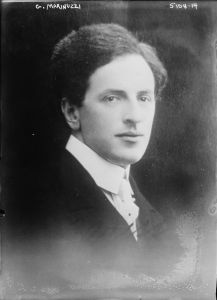 His debut in conducting took place in 1901, in a completely fortuitous way. The occasion was created not by the sudden indisposition of the conductor in office, as often happened, but by the intolerance that he had provoked towards himself by the orchestra. Called to replace the disputed conductor, Marinuzzi, thanks to the enthusiasm and willpower that were congenial to him, managed to bring a valuable "Rigoletto" into port.
His debut in conducting took place in 1901, in a completely fortuitous way. The occasion was created not by the sudden indisposition of the conductor in office, as often happened, but by the intolerance that he had provoked towards himself by the orchestra. Called to replace the disputed conductor, Marinuzzi, thanks to the enthusiasm and willpower that were congenial to him, managed to bring a valuable "Rigoletto" into port.
After this exciting experience, the young Marinuzzi wisely wanted to deepen his musical knowledge and, as an experiment, he went to Milan, the temple of music, where, in contact with musicians, impresarios and publishing houses, he realized in a very realistic way the difficulties that would arise in his career.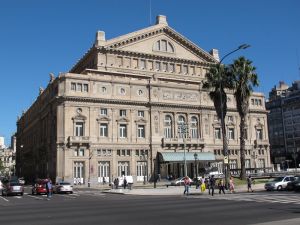 Having accepted the routine of the "minor" theatres, as he used to do at the time, and refused an attractive experience at the Teatro Colon in Buenos Aires, because it was considered premature, Marinuzzi knew his first great opportunity by coming into contact (it was 1908) with the Parisian Opéra Comique, where he conducted operas by Mascagni and Puccini, experimenting with the different conceptions of musical interpretation and music in general that at that time divided the French and Italian musical world.
Having accepted the routine of the "minor" theatres, as he used to do at the time, and refused an attractive experience at the Teatro Colon in Buenos Aires, because it was considered premature, Marinuzzi knew his first great opportunity by coming into contact (it was 1908) with the Parisian Opéra Comique, where he conducted operas by Mascagni and Puccini, experimenting with the different conceptions of musical interpretation and music in general that at that time divided the French and Italian musical world.
After a "picturesque" interlude at the Teatro Real in Madrid, Marinuzzi came into contact with Walter Mocchi, a brilliant impresario who pushed him to move to the South American world, in those years very propitious to Italian operas and performers. At his debut in Argentina, Marinuzzi, who performed in a "tour de force" of Italian operas (Ballo in maschera, Wally, Traviata, Aida, Bohème), received enthusiastic welcomes that will be repeated regularly every time he travels to South American countries.
When he returned to Italy, the doors of La Scala were finally opened to him, where, between 1914 and 1915 he was able to direct, with great success, not only the arduous Wagnerian "Oro del Reno", but also to premiere two operas: "Notte di leggenda" by Alberto Franchetti and "Fedra" by Ildebrando Pizzetti, to which he remained particularly attached 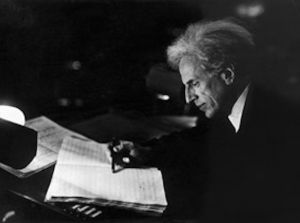 throughout his career.
throughout his career.
During the years of the First World War, Marinuzzi agreed to take over the direction of the Conservatory of Bologna, left vacant by Ferruccio Busoni.
He did so after many hesitations but still carrying out his task with passion and competence.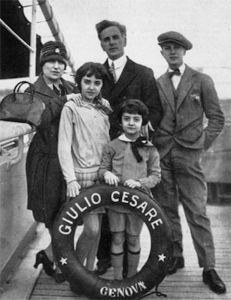 His return to conducting saw him, in 1918, engaged again in South America; at the Colon of Buenos Aires, he was able, among other things, to present his work "Jacquerie", a fundamental testimony of how Marinuzzi was able to reconcile his exhausting conducting activity with his creative one.
His return to conducting saw him, in 1918, engaged again in South America; at the Colon of Buenos Aires, he was able, among other things, to present his work "Jacquerie", a fundamental testimony of how Marinuzzi was able to reconcile his exhausting conducting activity with his creative one.
Between 1919 and 1921 Marinuzzi triumphed in the United States and recorded his first records there. Applauded at the Metropolitan of New York and in other cities as a composer, in 1920 he accepted the position of director of the Chicago Opera, which he left in March 1921.
Having obtained the Stable Direction for three years at the new Royal Opera House in Rome, Marinuzzi directed, among other things, an important edition of Boito's "Nerone" (February 1928), as well as the premiere of the disputed "Sette canzoni" by Gianfrancesco Malipiero (1929).
An important event in the life of the Sicilian musician was the first performance at La Scala of his new opera "Palla de' Mozzi" under the baton of the composer (1932) and re-proposed with equal success at the Rome Opera in 1942.
Having refused to write at the Metropolitan, Marinuzzi preferred to alternate tours abroad with a fervent activity in the theatres and concert institutions of our country (Marinuzzi was 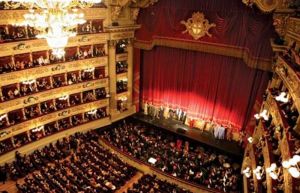 a convinced proponent of symphonic music and directed many contemporary premieres of his work...).
a convinced proponent of symphonic music and directed many contemporary premieres of his work...).
In 1935 the return to La Scala took place with the filming of "La Fiamma" by Ottorino Respighi. He remained for a long time in the "temple of opera"; in the decade of La Scala he also directed other Italian theatres, including the Teatro Verdi in Trieste (Otello, Don Pasquale), the Teatro Comunale in Florence, the Teatro Civico in Bolzano, the Teatro dell'Opera in Rome (Turandot, La donna senz'ombra by Richard Strauss), the Teatro La Fenice in Venice.
In those years he also worked in Germany, where he directed "La Bohème" and "Tannhäuser" at the Nationaltheater in Munich; many of his tours were successful everywhere. In the autumn of 1936 he was applauded by Richard Strauss who considered him one of his best performers.
During the years of the Second World War Marinuzzi's activity continued mainly in Italy but also abroad (with a tour in Germany at the head of the Orchestra of the Maggio Musicale Forentino): Marinuzzi is also present on the podium of La Scala, where he presents the Italian premiere of Carl Orff's cantata "Carmina Burana".
On 21 April 1945, in those tragic and shocking days marking the end of the atrocious world war (during which his son Gino jr. was interned in a German prison camp) at the Teatro Lirico in Milan, Gino Marinuzzi offered to an enthusiastic audience his will as supreme conductor with a splendid performance of Mozart's "Don Giovanni".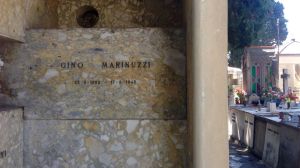 Gino Marinuzzi died in Milan on 17 August 1945, struck down by a liver crisis that overwhelmed him within three days.
Gino Marinuzzi died in Milan on 17 August 1945, struck down by a liver crisis that overwhelmed him within three days.
He was buried in San Remo, his favourite city.
In 1952 the Teatro Massimo of Palermo commemorated him with his music, while for the centenary of his birth the Teatro alla Scala staged an exhibition followed by the publication of precious materials.
In San Remo, a Review for young conductors was established in his memory.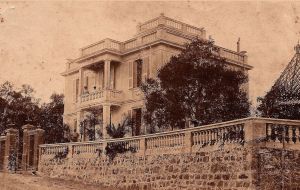 His professional success did not affect the simplicity, seasoned with Sicilian wit, of the man Marinuzzi, who throughout his life preferred the city of San Remo, with which he had had a far from positive impact in his youth.
His professional success did not affect the simplicity, seasoned with Sicilian wit, of the man Marinuzzi, who throughout his life preferred the city of San Remo, with which he had had a far from positive impact in his youth.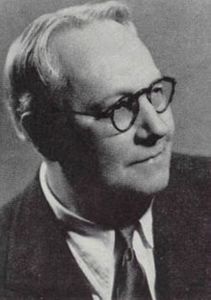 It was his friend Franco Alfano, who had already taken refuge in the city of flowers for some time, who suggested Sanremo to him for his periods of rest and recreation. In his house, on the hill of the city, surrounded by family and friends, he cultivated projects of theatre animation, musical organization, floriculture.
It was his friend Franco Alfano, who had already taken refuge in the city of flowers for some time, who suggested Sanremo to him for his periods of rest and recreation. In his house, on the hill of the city, surrounded by family and friends, he cultivated projects of theatre animation, musical organization, floriculture.
Among so many journeys, among so many human contacts, between nostalgia and eternal enthusiasm, the house of Sanremo was for Gino Marinuzzi the safe landing place of all time and today, under that sky and that sun that Maestro Marinuzzi loved so much, he rests in the company of the people infinitely dear to him.
(Source: Gino Marinuzzi La Biografia ;© ginomarinuzzi.it 2007)




